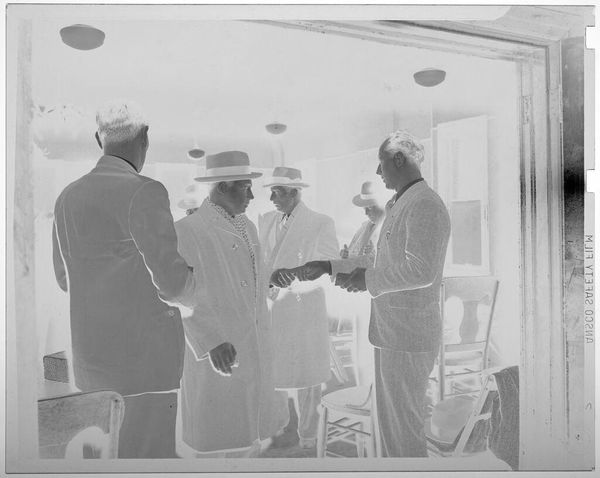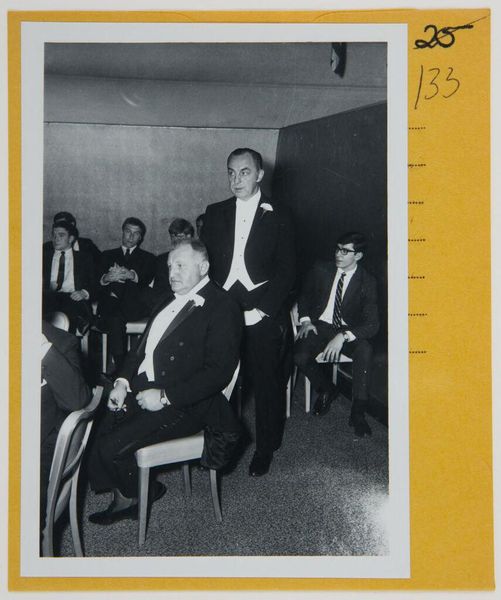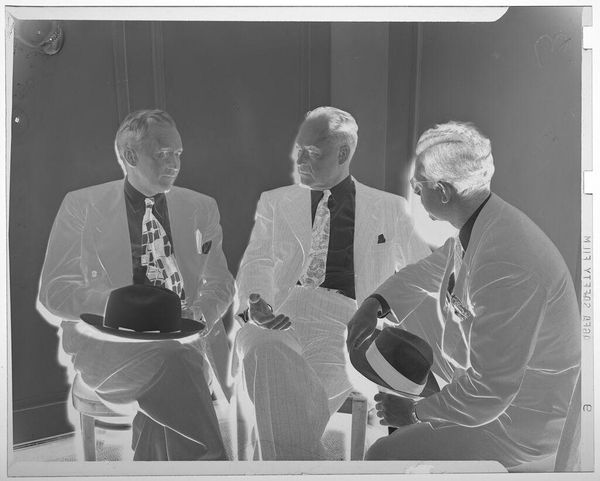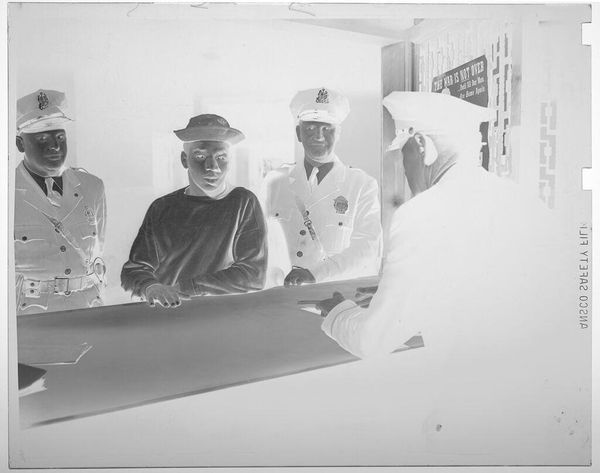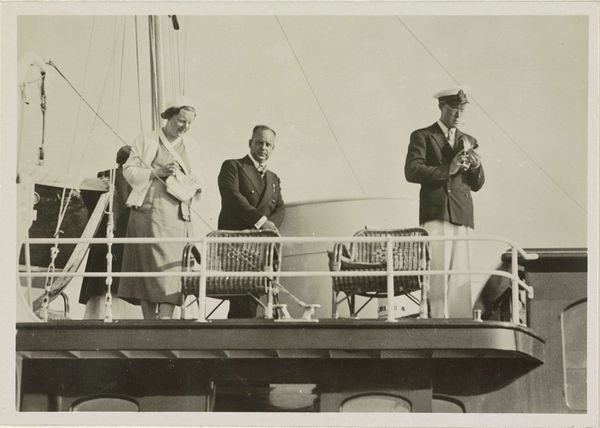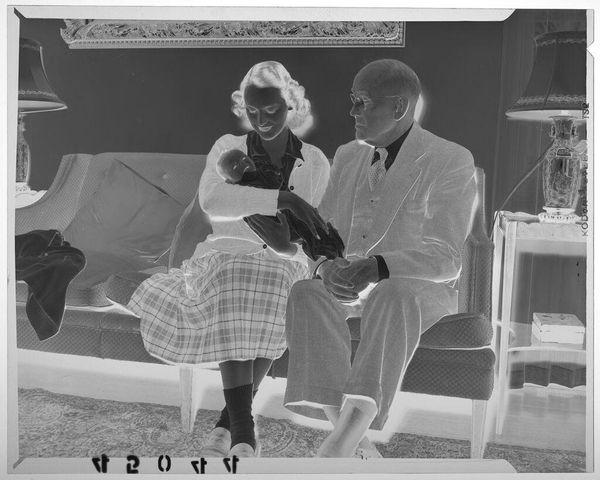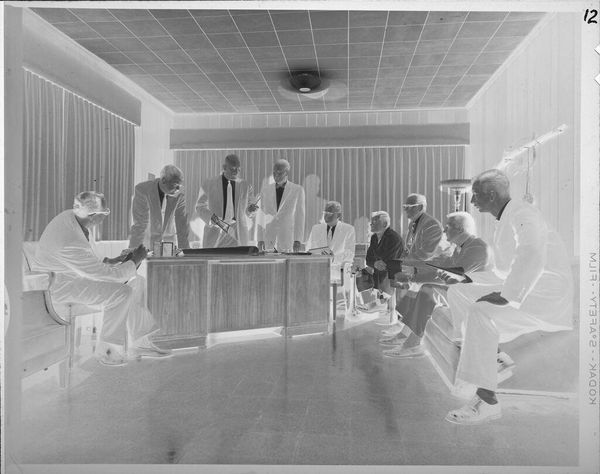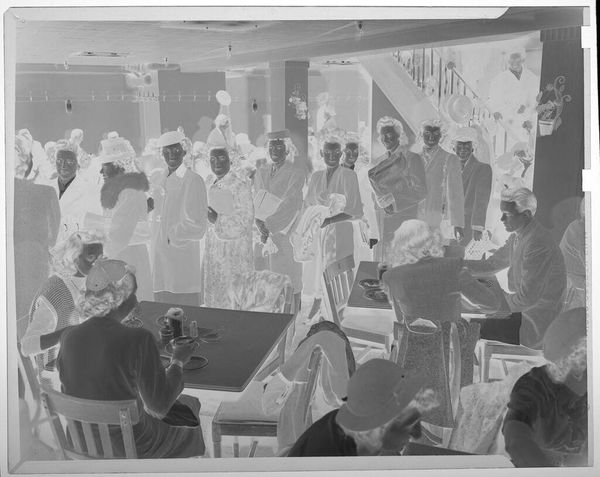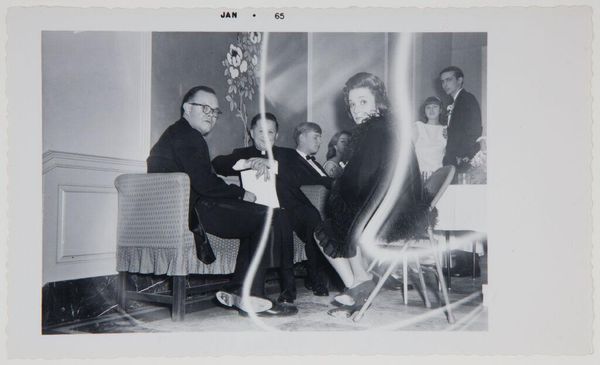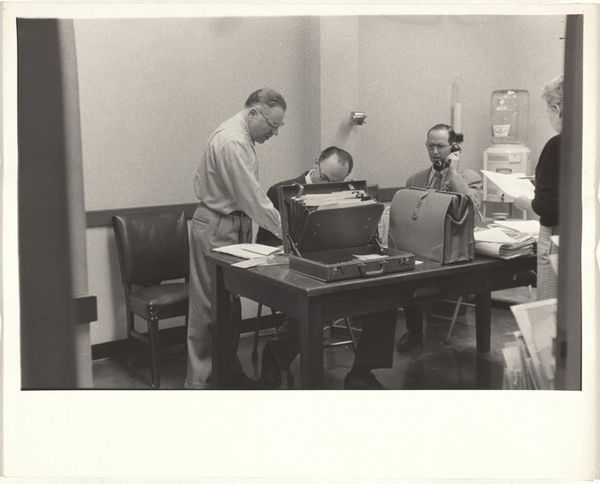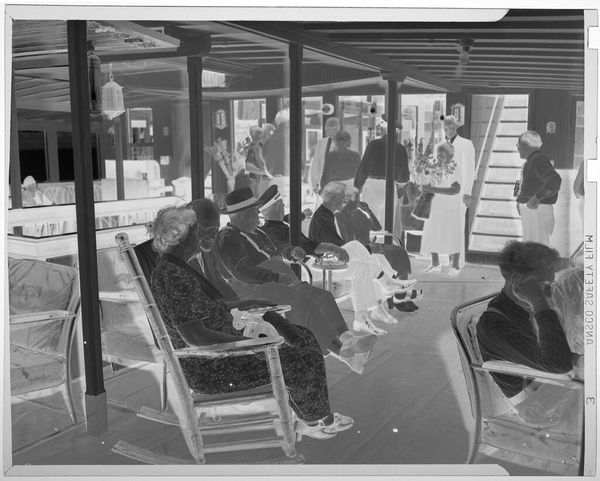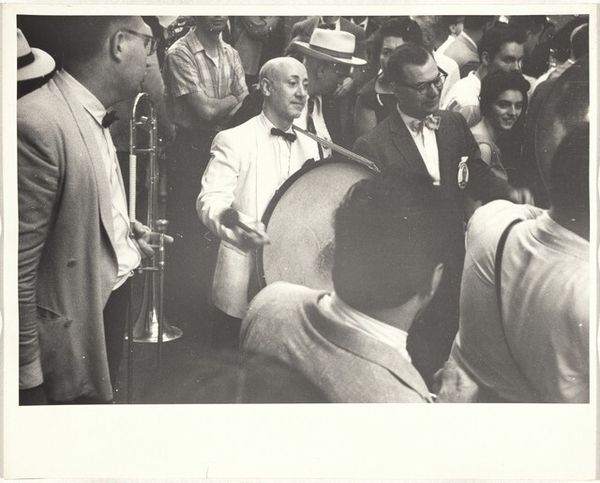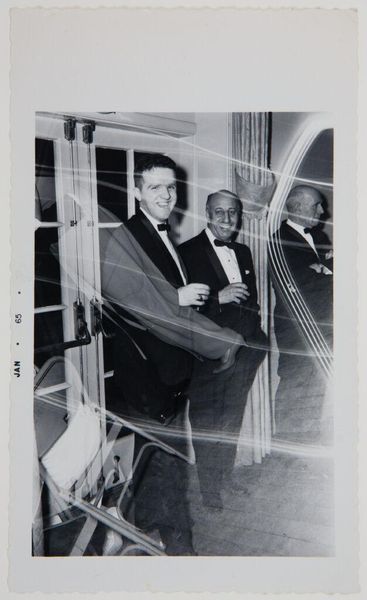
Bezoek van Juliana, koningin der Nederlanden, en Bernhard van Lippe-Biesterfeld aan het prinsenjacht Hr. Ms. 'Piet Hein' te Muiden op 28 augustus 1937 Possibly 1937 - 1938
0:00
0:00
photography, gelatin-silver-print
#
portrait
#
archive photography
#
photography
#
gelatin-silver-print
Dimensions: height 86 mm, width 119 mm
Copyright: Rijks Museum: Open Domain
Editor: This gelatin silver print, possibly from 1937 or 1938, depicts Queen Juliana and Prince Bernhard visiting the 'Piet Hein' yacht. It feels staged and rather formal. What's your take on this image? Curator: This image encapsulates a pivotal moment in Dutch history, just before the shadow of World War II descended. The rigid formality speaks volumes about the performative aspect of monarchy and the construction of national identity. Consider the power dynamics at play: Bernhard, a German prince, integrated into the Dutch royal family, yet carrying the weight of a potentially hostile nation. What do you make of the interior space they inhabit? Editor: It feels both luxurious and cramped. Like a carefully designed stage set. Curator: Exactly. It's a controlled environment, projecting an image of stability and prosperity while the world outside was increasingly volatile. The presence of the microphone emphasizes the constructed nature of the moment – this wasn’t just a visit; it was a performance for the public, broadcast into homes. It raises questions about propaganda and the use of the royal family to solidify national unity during a time of great uncertainty. Why do you think it's relevant today? Editor: It reminds me that images can be so carefully constructed to project a specific narrative, especially in the context of those in positions of power. Curator: Precisely. Examining the photograph through the lenses of history, gender, and power helps us unpack the complex layers of representation and understand how such images contributed to shaping public perception during a critical era. Editor: I never would have thought to dig this deep. It really highlights how photos that seem commonplace can reveal a lot. Curator: It is a great moment to think critically about visual history and social issues.
Comments
No comments
Be the first to comment and join the conversation on the ultimate creative platform.
